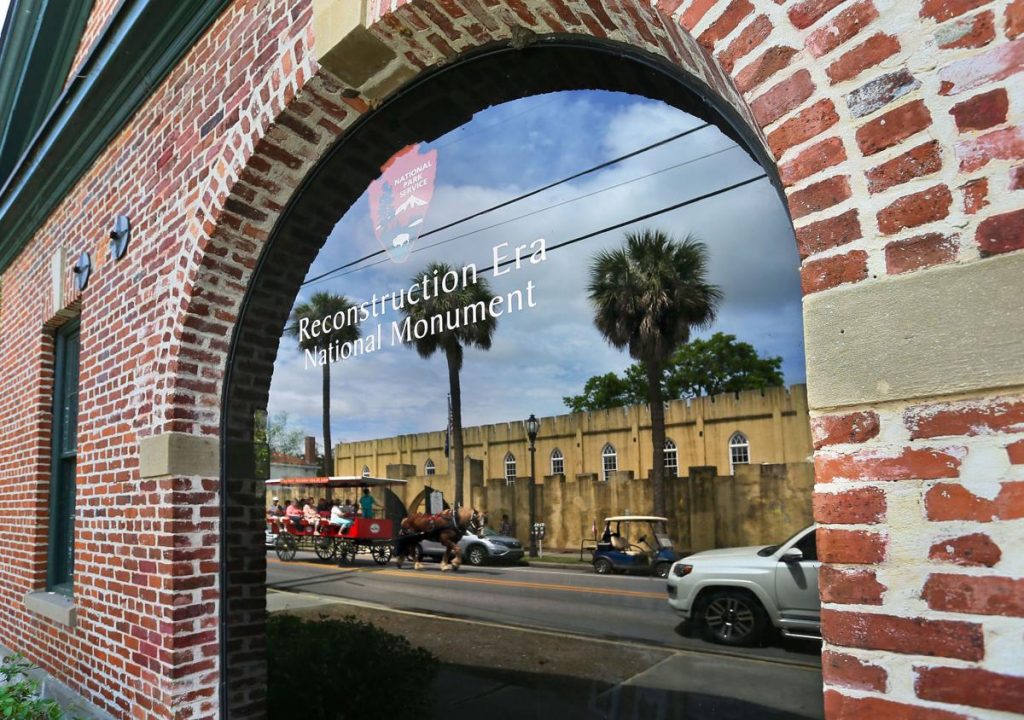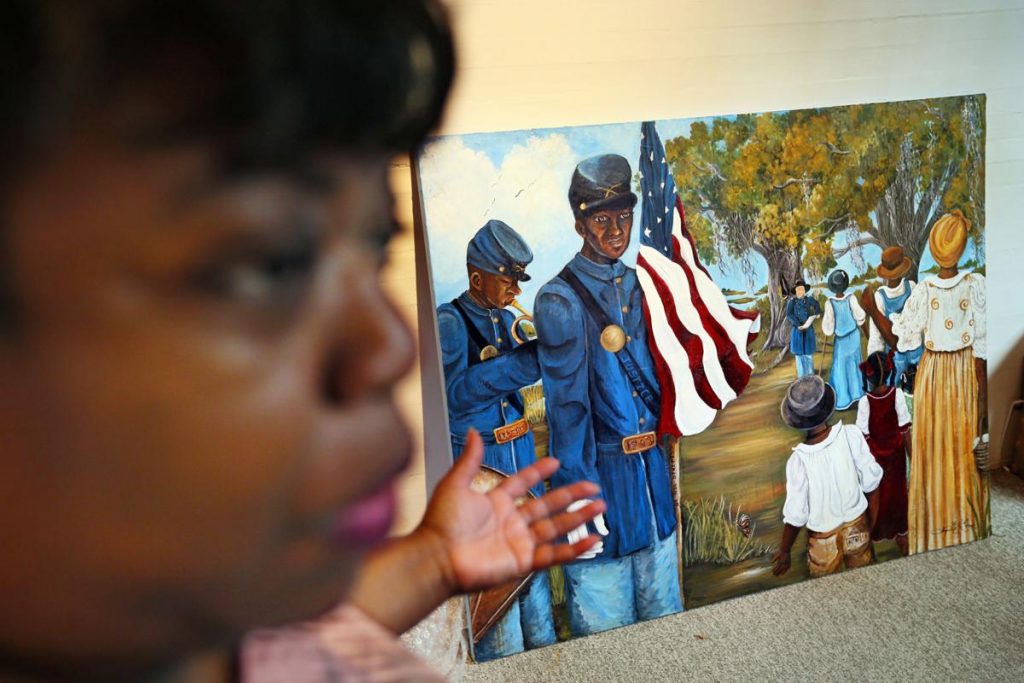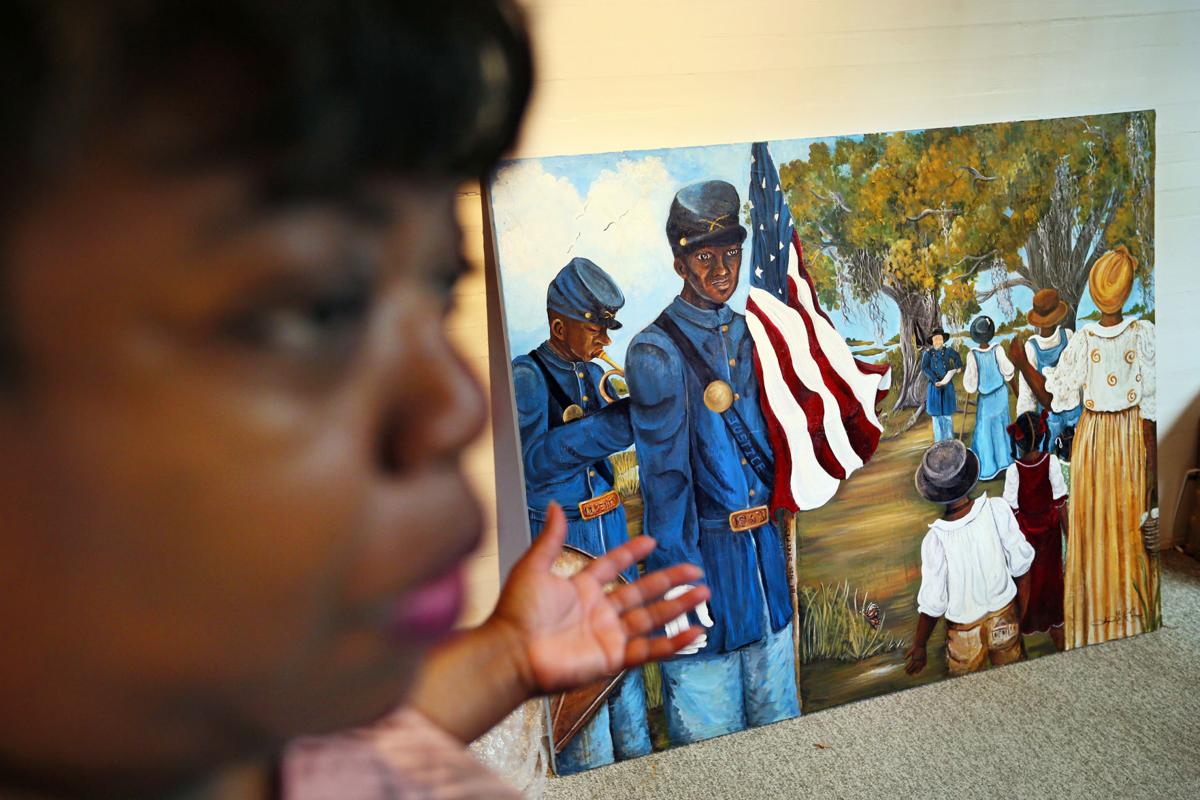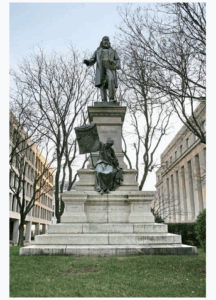
A window in the Visitor Center at the old Beaufort Firehouse, which is changing its name to Reconstruction Era National Historic Park.
BEAUFORT — “What brings you to our little corner of history today?”
A volunteer greets each guest with the question as they wander into the Old Beaufort Firehouse across from the Arsenal on Craven Street. It feels appropriate for the spot that sits off a small intersection in this seaside town’s historic district.
For just over a year, the building has been the headquarters and visitor center for the Reconstruction Era National Monument, recently renamed the Reconstruction Era National Historical Park after a bipartisan congressional bill was signed into law last month.
It’s unusual that the park’s name was changed so early. President Barack Obama only named the collection of historic sites in Beaufort County a national monument in January 2017 and, as the National Park Service prepares to make it fully operational, the sites are still taking shape.
Yellowstone has Old Faithful, Gettysburg has the battlefield, the Grand Canyon has its namesake gorge. But the Reconstruction Era National Historical Park, though it does include several physical sites, highlights a much more abstract thing: the story of what happened to the United States and, in particular, thousands of freed slaves, in the years following the bloodiest war in the nation’s history.
Why now
The time is ripe for this park to get off the ground, said Scott Teodorksi, the site’s first permanent superintendent. The nation is in the midst of a resurgence of interest in the Reconstruction Era, he said, a period that many historians have realized holds important insight into the racial inequity that persists in the U.S. today.
And Henry Louis Gates Jr., an author, historian and Harvard University professor best known for his show “Finding Your Roots,” shone a spotlight on Beaufort in his four-hour documentary series that debuted on PBS earlier this month.
It’s clear from even the earliest shots of “Reconstruction: America After the Civil War” that coastal South Carolina played a key role in Gates’ interpretation. He filmed around Beaufort County, even inside the national park’s visitor center, and sat down for an interview with Michael B. Moore, the CEO of Charleston’s in-progress International African American Museum.
Moore’s great-great grandfather was Robert Smalls, a former slave who famously stole a Confederate ship during the war and later was elected to Congress, eventually purchasing his former master’s house in Beaufort.
Smalls is an example of one of the formerly enslaved who achieved things during Reconstruction that would have been unimaginable before the Civil War. But, as Gates recently explained to a group of Beaufort County middle school students, even more overlooked than Reconstruction is the period directly after, known as the “Redemption” era.
In the documentary’s accompanying book about the period, “Stony the Road,” Gates wrote that Redemption was when the progress during Reconstruction was “systematically erased,” allowing for the “rise of a white supremacist ideology.”
In order to understand the roots of many racial issues experienced now, Gates explained, understanding the true story of Reconstruction is a crucial place to start.
Why here
So far, Teodorski said, the two main questions he has been answering for park visitors are “What is Reconstruction?” and “Why is a national park here in Beaufort?”

Artist Sonja Griffin Edwards interpreted New Years Day in 1863 when the Emancipation Proclamation was read at Camp Saxton in Port Royal.
He won’t tell you that Beaufort is the only place where a national park for the Reconstruction Era could be built, though he feels comfortable saying it’s one of the most fitting places. And when asked when Reconstruction officially began, Teodorski responds that he’ll “defer to the historians on that one.”
That’s not to say that the longtime National Park Service employee doesn’t know his stuff; he’s clearly immersed himself in Reconstruction Era history. Instead, it’s more of a scrupulousness with which he handles the narrative, careful to not pull in any direction.
Union forces took control of Beaufort County in November 1861, prompting an early start to the same changes that would happen later all across the South. Slaves were freed, but not yet citizens. They formed schools and churches and purchased land.
The Brick Baptist Church on St. Helena Island, one of the four sites included in the national park, became an early site for both worship and education during Reconstruction.
The church, which was built by slaves 1855, is still used for weekly worship by its parish, which retains ownership of the interior. The brick facade marks the divide between church property and the National Park Services, since the park retained a “facade easement” for the property, allowing it to maintain the exterior and surrounding grounds.
Across the street and down a path that runs through the Penn Center, a cultural center that was a site of an early school built for former slaves, sits Darrah Hall, a community center that was built in the 1890s.
Faded lines on the wood floor show that it was once used as a basketball court. It’s hosted community-wide events, performances and family reunions. Even though it’s the property of the National Park Service, it will be available for community members to reserve, in addition to serving as an education and interpretation center for the park.
What’s next
As far as national parks go, this one is moving pretty quickly, Teodorski said. The visitor center has been up and running, though with limited hours, since spring 2018, and the park received its start-up budget last summer. He hopes to hire a seasonal ranger, maybe even two, very soon.
The same bill which made the sites a national historical park also established a Reconstruction Era National Historic Network. It’s in the very early stages, but the idea is to connect places across the U.S. that are important to the Reconstruction Era.
For example, in Beaufort County, the Penn Center and the Robert Smalls House likely would become part of that network — if they wanted to, he said.
He’s also in the process of working with the Navy on how guests will access its fourth site, the Emancipation Oak at Camp Saxton in Port Royal. A grove of live oaks on the Naval Hospital base was the site of an elaborate celebration and reading of the Emancipation Proclamation on New Year’s Day 1863.
The site poses a significant challenge. Currently, guests may only access the site with a National Park Service employee since it’s on the grounds of the hospital, but Teodorski said the agency is working out a plan to let people visit the site during the park’s operating hours.
He said he hopes the park will be able to host reenactments there eventually, when the site is fully open.
For now, a depiction of that historic celebration will be hung in the park’s visitor center. It was re-imagined by artist Sonja Griffin Evans, a Beaufort native, Army veteran and painter whose work has been displayed across the country and even in a special exhibition in France.
She called the painting “Mine Eyes Have Seen the Glory,” a reference to the lyrics of the “Battle Hymn of the Republic.” It’s the first of a four-painting series she’s creating about Reconstruction.
The most arresting part of the composition is the face of an African American Union soldier, who looks close to tears.
“Even being an African American, I cannot understand what my ancestors went through,” Evans said. “I can only capture a glimpse.”
Two other park sites are featured in the painting — the Brick Baptist Church, which she said she depicted on a soldier’s drum because the “church is the heartbeat of the community.” She painted Darrah Hall on a young boy’s back pocket, because it’s a place that’s precious to his community, tucked away in a safe spot.
–postandcourier.com



